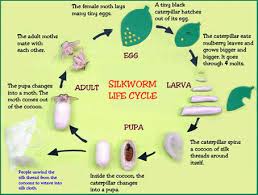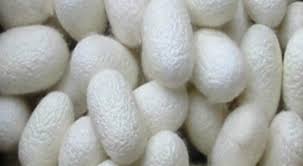Pearl of East: Your travel guide in Uzbekistan.
|
Main Menu
Tashkent
Samarkand
Bukhara
Khiva
Baysun
Nukus
Margilan
Ferghana
Nurata
Namangan
Kokand
Sarmysh Say
Termez
|
News / НовостиUzbekistan: New technology – new achievements05/05/2015 16:07 A pilot project on approbation of a new technology of cultivation of silkworms is being implemented at the Khorezm regional agricultural gathering of citizens “Shavat Kala”. Before the Uzbek-Japanese joint project with participation of Japanese International Cooperation Agency JICA, Tokyo University of Agriculture and Technology, Regional Branch of the Association of Business Women and the Women's Committee of Uzbekistan has three major tasks. 1. Improvement of technology of silkworm rearing in Khorezm region. 2. Improving the quality of cocoons and silk thread to the international standard. 3. Organization of manufacture of silk fabrics, consumer goods, in the form of souvenirs for sale in domestic and foreign markets. Within three years, the Japanese experts headed by Professor of Tokyo University of Agriculture and Technology Mitsuo Osawa will conduct training in the Khorezm region on growing silkworm based on Japanese technology. - We try to promote development of enormous potential of Uzbekistan in the silkworm, - says Professor Osawa. - The global trend in this sector indicates that demand is extremely high and the supply is insufficient. For women of the region the successful implementation of the project will help to create workplaces, they will be able to produce silk souvenirs and send them for export. This is a strategic objective of our work. In spring and summer of the last year, with the participation of all interested, test classes and study the climatic conditions of Khorezm region were held. The results were positive. They allow growing silkworms in large quantities and having high quality cocoons. Moreover, experiments have shown that rearing of silkworms can be carried out more than once a year in April and May, as it was before, but also in summer in August.
Scientists are planning to improve the varieties of mulberry trees themselves for enhancing the effect of approbation of Japanese technology in Khorezm region, because the quality of the cocoon depends on forage silkworm. Apart from the fact that each branch of the Japanese varieties of mulberry threes comes out three times more than leaves, they are much higher in content of protein and other essential nutrients needed silkworm. Similar three-year project was implemented in Ferghana Valley prior to Khorezm region. According to specialists, an effect was positive. For example, the output of the cocoon from one box increased from 50-60 to 80 kilograms. Each cocoon added in weight – before it reached at best a half a gram, now often exceeds two. This has a direct impact on the output of yarn and its strength in unwinding cocoon.
|
Calendar
Weather
Useful Links
Searching for Airways and Hotels
|














 Silkworm of larvae bred in the incubator is distributed on farms. In a kind of working set, familiar to Japanese sericulture, includes special mesh and wooden boxes. Beginners of Khorezm silkworm are provided with them free of charge. The main thing is that in practice, the result was not inferior to the experimental parameters. In season of rearing, Professor Osawa personally comes to each farmer to get acquainted with the state of affairs and give necessary advice.
Silkworm of larvae bred in the incubator is distributed on farms. In a kind of working set, familiar to Japanese sericulture, includes special mesh and wooden boxes. Beginners of Khorezm silkworm are provided with them free of charge. The main thing is that in practice, the result was not inferior to the experimental parameters. In season of rearing, Professor Osawa personally comes to each farmer to get acquainted with the state of affairs and give necessary advice.